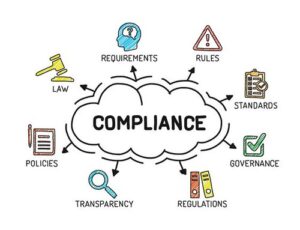Enhesa is an environmental, health and safety compliance firm (EHS). It provides regulatory, legislative and policy services in environmental law and regulation, and Occupational Safety and Health Administration (OSHA) regulation in the U.S. to a variety of companies. The firm also covers the equivalent of these two fields in around 285 jurisdictions worldwide. It’s headquartered in Brussels with offices in Arlington, Virginia and Tokyo.
My role as an EHS intern in the Arlington office is to cover the environmental, and health and safety laws and regulations in several U.S. jurisdictions as well as help cover five South Asian jurisdictions: India, Pakistan, Sri Lanka and Bangladesh. I’m currently supporting and working with a group of Enhesa’s legal consultants.
The Stakeholder Focused Approach

As environmental policy advocates, we understand the implications laws and regulations have on various stakeholders. The impetus of understanding the who, what, where and how (WWWH) a regulation or legislation impacts clients is the backbone of Enhesa’s Environmental Health and Safety (EHS) compliance model. Though this model may seem intuitive, it is quite complex. Truly understanding what falls within “EHS scope”, and how it impacts clients’ operations cements the WWWH. The scope deals with legal and regulatory developments organized under very specific topics, from environmental duty of care, water and air emission management to occupational safety. This in turn helps legal consultants at Enhesa determine issues clients are interested in and develop a holistic approach to drafting their legislative and regulatory reports focused on clients’ operations.
The Impetus of Trainings

During my first month at Enhesa, I’ve begun to see the complex nature of the firm’s EHS compliance model as I’ve had the opportunity to expose myself to a variety of trainings. One example of such EHS trainings involved the various federal regulations dealing with hazardous waste management under the Comprehensive Environmental Response, Compensation, and Liability Act of 1980 (CERCLA) and the Resource Conservation and Recovery Act of 1976 (RCRA). The training was led by a former EPA attorney with decades of experience dealing with a variety of hazardous waste management cases.
During these trainings Enhesa experts also present their findings from their client audits. These audits are from both domestic and international issues to further illustrate how the issues presented traverse country boarders. Even as someone who has taken classes in and has internship experience dealing with the environmental aspects of real estate law, I found it incredibly informative. I particularly appreciated how the training focused on how to best convey regulatory and legislative requirements to Enhesa’s clients.
Using Plain English to Best Convey EHS Requirements

Enhesa’s model focuses on simplifying the language of the legislations and regulations within their scope. Throughout my law school experience, my professors emphasized the importance of using plain English to be concise and clear in legal writing. Besides, most legalese has its origins in Latin, and unless one has a background in romantic languages it is difficult to keep the terminology straight.
The wave of using plain English in the legal field compliments what we all first learn in our first-year Communications class at Bard CEP— know your audience. Knowing the audience of your writing is one of the most important rules of advice I have received as both a policy and law student. Communicating in clear and concise language is the backbone of both better policy advocacy and effective regulatory compliance.
Another key to being an effective communicator is inclusivity— making sure persons from various backgrounds are accounted for. One major concern of simplifying language is successfully identifying and including the important requirements and stipulations that a law or regulation presents. The successful identification of the key requirements of a regulation along with whether the requirements directly impact a client’s operations is what ultimately determines the language used in the client reports at Enhesa. No matter the regulation or law, we always ask the question, “Is this in scope?” and how important is it for our clients to be made aware of any new policy, legislative proposal, or agency enforcement action.
As I move past my first month of working at Enhesa, I hope to further develop my nose for sniffing out what issues are in scope for Enhesa’s clients and continuing to perfect my writing in plain, clear, and concise language.

Dear Gautam,
Thank you so much for your encouraging words! I agree that the world of CERCLA legislation is complex and navigating it is quite an undertaking. I hope to further understand it’s facets through my work at Enhesa and the various trainings they conduct in the next couple of months.
I also agree with your insight on the importance of clear communication being at the core of effective policy advocacy, as well as human engagement. The CEP program has emphasized this skill since day one and I am very grateful for it!